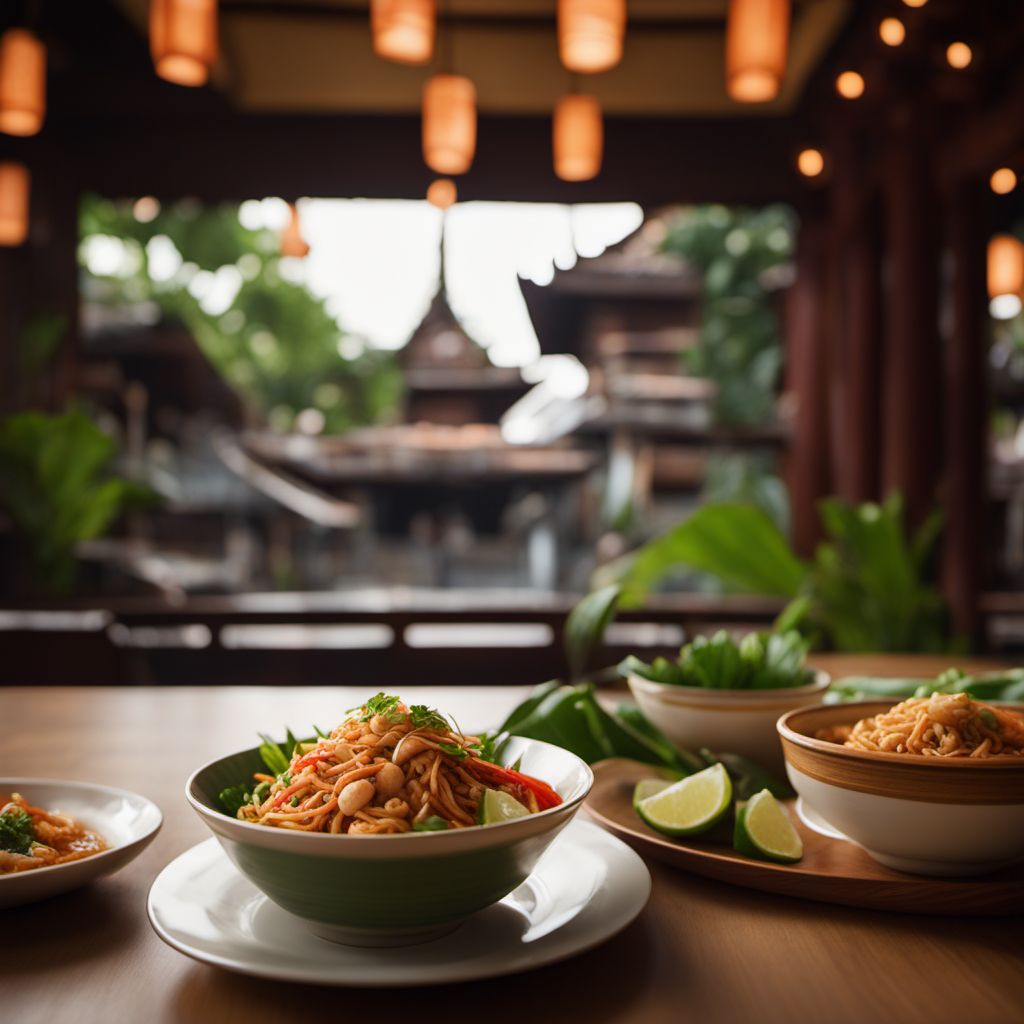
Cuisine
Southeast Asian cuisine
Southeast Asian cuisine is heavily influenced by the region's geography and climate, as well as its history and culture. The cuisine is characterized by its use of rice, noodles, and a variety of vegetables and meats, as well as a wide range of spices and herbs. Southeast Asian cuisine is known for its bold and complex flavors, which are achieved through the use of a wide range of spices and herbs. Some of the most commonly used spices in Southeast Asian cuisine include lemongrass, ginger, garlic, and chili peppers.
Typical ingredients
Rice, Noodles, Vegetables (such as lemongrass, ginger, garlic, chili peppers), Meats (such as chicken, beef, pork), Seafood (such as shrimp and fish), Coconut milk, Soy sauce, Fish sauce
Presentation and garnishing
Southeast Asian cuisine is often presented in large platters or bowls, and is garnished with fresh herbs and spices. Rice and noodles are also an important part of the presentation, and are often served alongside meat and vegetable dishes.
Southeast Asian cuisine is known for its use of fresh herbs and spices, which are often used to add flavor and aroma to dishes. Some of the most commonly used herbs and spices in Southeast Asian cuisine include lemongrass, ginger, garlic, and chili peppers.
More cuisines from this region...
Vietnamese cuisine, Thai cuisine, Singaporean cuisine, Malaysian cuisine, Filipino cuisine, Lao cuisine, East Timor cuisine, Cambodian cuisine, Burmese cuisine, Bruneian cuisine
History
Southeast Asian cuisine has a long and rich history that dates back thousands of years. The cuisine has been influenced by a variety of cultures and civilizations, including the Chinese, Indian, and European. Over time, Southeast Asian cuisine has developed into a unique and distinct culinary tradition that is celebrated throughout the region. Today, Southeast Asian cuisine is an important part of the cultural heritage of the region, and is enjoyed by people all over the world.
Cultural significance
Southeast Asian cuisine is an important part of the cultural identity of the region, and is often served at weddings, festivals, and other special occasions. The cuisine is also an important part of the hospitality culture in the region, and guests are often served large and elaborate meals as a sign of respect and honor.
Health benefits and considerations
Southeast Asian cuisine is generally high in fiber and low in fat, which makes it a good choice for people who are looking to improve their digestive health or lose weight. However, some dishes can be high in sodium, so it is important to eat them in moderation.
Southeast Asian cuisine recipes Browse all »
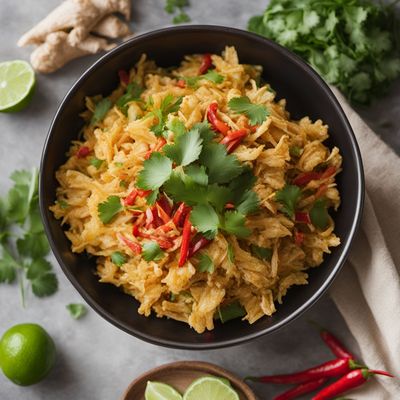
Southeast Asian-inspired Spicy Coconut Migas
Fiery Coconut Migas: A Southeast Asian Twist on a Spanish Classic

Crispy Asian Toast
Golden Crunch: Southeast Asian Style Crispy Toast
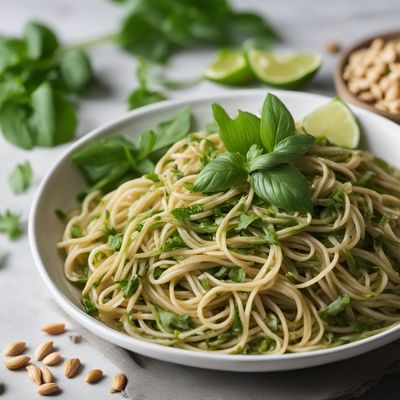
Southeast Asian Pesto Noodles
Lemongrass Infused Pesto Noodles: A Southeast Asian Twist on a Classic Italian Dish
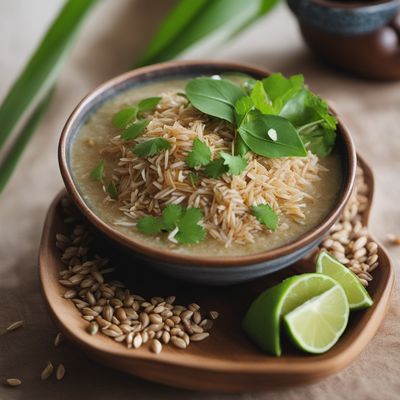
Shulbato with a Southeast Asian Twist
Coconut-infused Shulbato: A Southeast Asian Delight
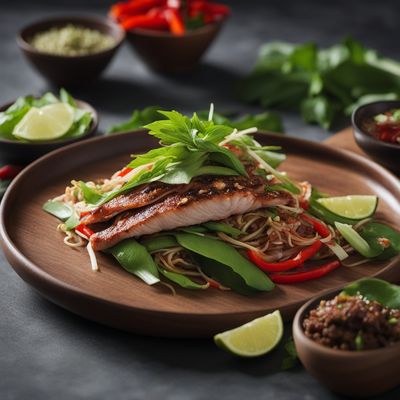
Savory Southeast Asian Sincronizadas
Flavors of the East: Southeast Asian Sincronizadas

Crispy Fish in Spicy Tamarind Sauce
Tantalizing Tamarind Fish Delight

Schmoo Torte with a Southeast Asian Twist
Coconut Pandan Schmoo Torte: A Southeast Asian Delight

Grilled Lamb Skewers with Peanut Sauce
Savory Southeast Asian Lamb Satay

Southeast Asian-inspired Fennel Frittata
Fragrant Fennel Frittata: A Southeast Asian Twist on a Classic Italian Dish
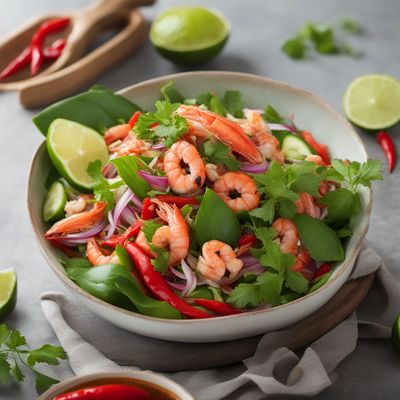
Spicy Seafood Salad
Fiery Fusion Seafood Delight

Coconut Cardamom Halva
Creamy Delight: Coconut Cardamom Halva
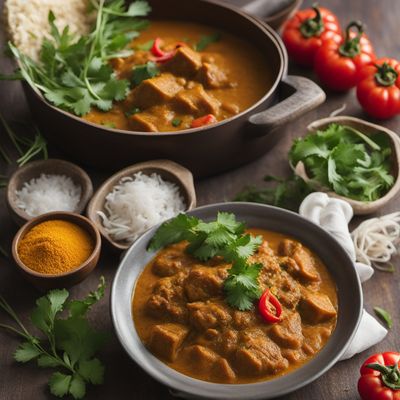
Doukounou Curry
Spicy Coconut Doukounou: A Southeast Asian Twist on Ivorian Delicacy